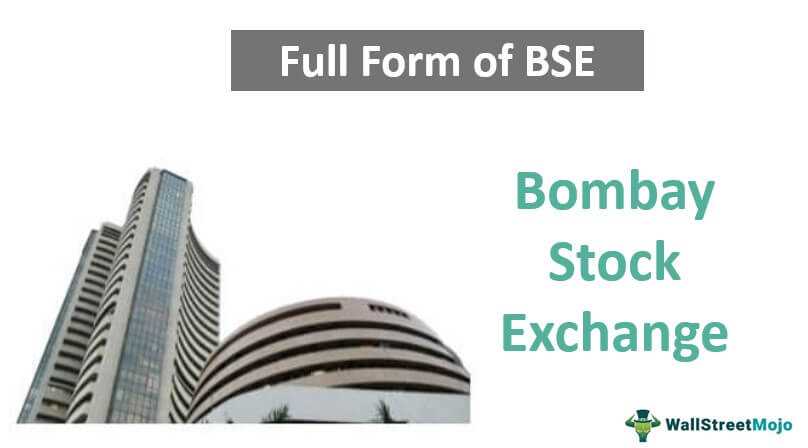Bombay Stock Exchange: A Comprehensive Guide to BSE, Its Operations, and Historical Background
Overview of Bombay Stock Exchange
The Bombay Stock Exchange was established in 1875 and is located in Mumbai, India. It is a demutualized exchange, meaning that it is owned by its shareholders and operates as a for-profit organization. BSE is regulated by the Securities and Exchange Board of India (SEBI) and follows strict rules and regulations to ensure fair and transparent trading.
BSE offers a wide range of financial products and services, including equities, derivatives, mutual funds, and debt instruments. It provides a platform for companies to list their securities and raise capital through initial public offerings (IPOs). Investors can trade these securities on the exchange, either through the traditional open outcry system or electronically through the BSE Online Trading (BOLT) system.
Operations of Bombay Stock Exchange
The operations of BSE are divided into various departments, each responsible for a specific function. These departments include trading, clearing and settlement, surveillance, and listing. The trading department facilitates the buying and selling of securities on the exchange. It ensures that the trading process is fair, efficient, and transparent.
The clearing and settlement department ensures that all trades executed on the exchange are settled in a timely manner. It handles the process of transferring securities and funds between buyers and sellers. This department plays a crucial role in maintaining the integrity of the market and reducing counterparty risk.
The surveillance department monitors trading activities on the exchange to detect any irregularities or manipulative practices. It uses advanced technology and algorithms to identify suspicious trading patterns and takes appropriate action to maintain market integrity.
The listing department is responsible for approving and monitoring the listing of securities on the exchange. It ensures that companies meet the necessary requirements and comply with the regulations set by SEBI. Listing on BSE provides companies with access to a wide investor base and enhances their visibility in the market.
Historical Background of Bombay Stock Exchange

The Bombay Stock Exchange has a rich history that spans over a century. It was initially established as “The Native Share & Stock Brokers’ Association” in 1875. Over the years, it has grown in size and stature, becoming one of the leading stock exchanges in the world.
During its early years, BSE operated as an open outcry system, where traders would gather on the trading floor to buy and sell securities. In 1995, it became the first stock exchange in India to introduce electronic trading through the BOLT system. This move revolutionized the way trading was conducted and made it more efficient and accessible.
Today, BSE is a symbol of India’s economic growth and development. It has played a significant role in mobilizing capital for businesses and attracting domestic and international investors. With its robust infrastructure, advanced technology, and strong regulatory framework, BSE continues to be a key player in the global financial markets.
Overview of Bombay Stock Exchange
The Bombay Stock Exchange (BSE) is the oldest stock exchange in Asia and one of the largest in the world. It is located in Mumbai, India, and has a rich history dating back to 1875. The BSE plays a crucial role in the Indian capital market and is responsible for facilitating the buying and selling of securities, including stocks, bonds, and derivatives.
Key Features of Bombay Stock Exchange
1. Market Segments: The BSE has multiple market segments, including the Equity Market, the Debt Market, the Derivatives Market, and the SME (Small and Medium Enterprises) Platform. Each segment caters to different types of securities and investors.
3. Listing Requirements: Companies seeking to list on the BSE must meet certain criteria, including financial stability, track record, and corporate governance standards. The exchange has stringent listing requirements to ensure the quality and credibility of listed companies.
4. Market Surveillance: The BSE has a robust surveillance system in place to monitor trading activities and detect any irregularities or market manipulation. This helps maintain market integrity and investor confidence.
Role of Bombay Stock Exchange in the Indian Economy
The BSE plays a crucial role in the Indian economy by providing a platform for companies to raise capital and investors to participate in wealth creation. It serves as a barometer of the overall market sentiment and economic health of the country.
The BSE also contributes to the development of the Indian financial system by promoting transparency, liquidity, and efficiency in the capital market. It facilitates price discovery and ensures fair and orderly trading through its robust trading and settlement mechanisms.
Furthermore, the BSE plays a pivotal role in channeling domestic and foreign investments into the Indian market. It provides a platform for foreign institutional investors (FIIs) and non-resident Indians (NRIs) to invest in Indian securities, thereby contributing to capital inflows and economic growth.
Operations of Bombay Stock Exchange
The Bombay Stock Exchange (BSE) is the oldest stock exchange in Asia and plays a crucial role in the Indian financial market. It provides a platform for buying and selling securities such as stocks, bonds, and derivatives. The operations of BSE are carried out through various mechanisms and systems, ensuring smooth and efficient trading.
One of the key operations of BSE is the listing and trading of securities. Companies that want to raise capital by issuing shares can apply for listing on the BSE. Once listed, these securities can be traded by investors on the exchange. BSE follows a strict listing criteria to ensure the quality and credibility of the listed companies.
BSE also provides a platform for trading in derivatives such as futures and options. Derivatives are financial instruments whose value is derived from an underlying asset. BSE offers various derivative contracts based on indices, stocks, and commodities. Trading in derivatives allows investors to hedge their risk and speculate on price movements.
BSE also provides various other services to market participants, such as market surveillance, investor education, and research. It monitors trading activities to detect any market manipulation or insider trading. BSE conducts investor awareness programs to educate investors about the functioning of the stock market and the risks involved. It also publishes research reports and market analysis to provide valuable insights to investors.
Historical Background of Bombay Stock Exchange

The Bombay Stock Exchange (BSE) has a rich and fascinating history that dates back to the 19th century. It is the oldest stock exchange in Asia and one of the oldest in the world. The establishment of the BSE can be traced back to 1855 when a group of stockbrokers gathered under a banyan tree in Mumbai (then Bombay) to conduct their trading activities.
Over the years, the BSE has played a crucial role in the development of the Indian capital market. It has witnessed several significant milestones and has been at the forefront of various reforms and innovations. In 1986, the BSE introduced the BSE SENSEX, which is the benchmark index of the Indian stock market and is widely followed by investors and market participants.
The BSE has also been at the forefront of adopting technological advancements. In 1995, it became the first stock exchange in India to introduce an electronic trading system, replacing the traditional open outcry system. This move revolutionized the way trading was conducted and paved the way for increased efficiency and transparency in the market.
Today, the BSE is one of the leading stock exchanges in the world, with thousands of listed companies and millions of investors. It continues to play a crucial role in the growth and development of the Indian economy, providing a platform for companies to raise capital and investors to participate in the wealth creation process.
| Year | Milestone |
|---|---|
| 1855 | Stockbrokers gather under a banyan tree in Mumbai to conduct trading activities |
| 1875 | Bombay Stock Exchange Association is formed |
| 1986 | Introduction of the BSE SENSEX |
| 1995 | Introduction of electronic trading system |

Emily Bibb simplifies finance through bestselling books and articles, bridging complex concepts for everyday understanding. Engaging audiences via social media, she shares insights for financial success. Active in seminars and philanthropy, Bibb aims to create a more financially informed society, driven by her passion for empowering others.
